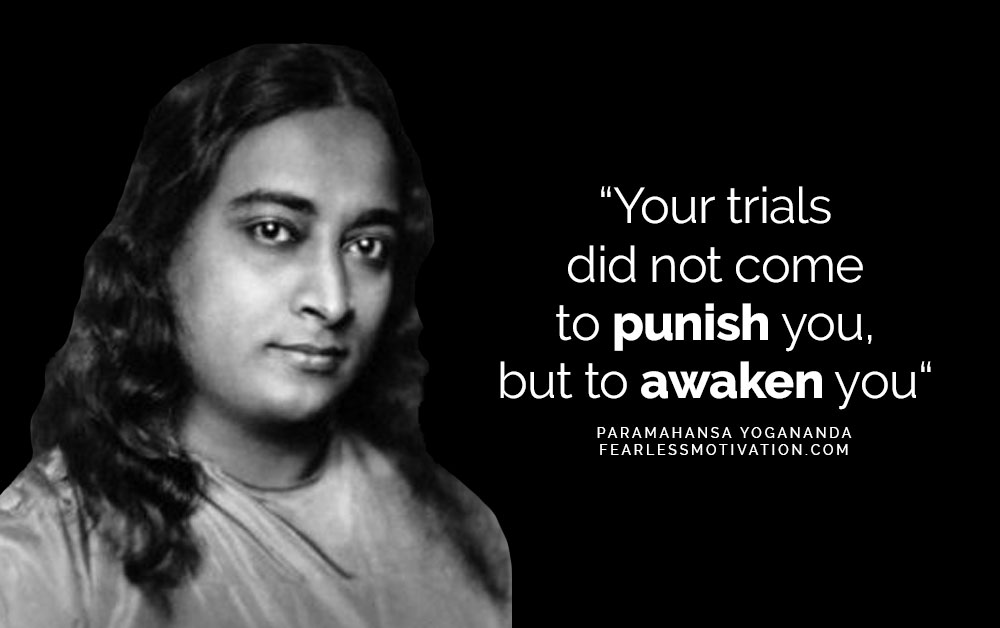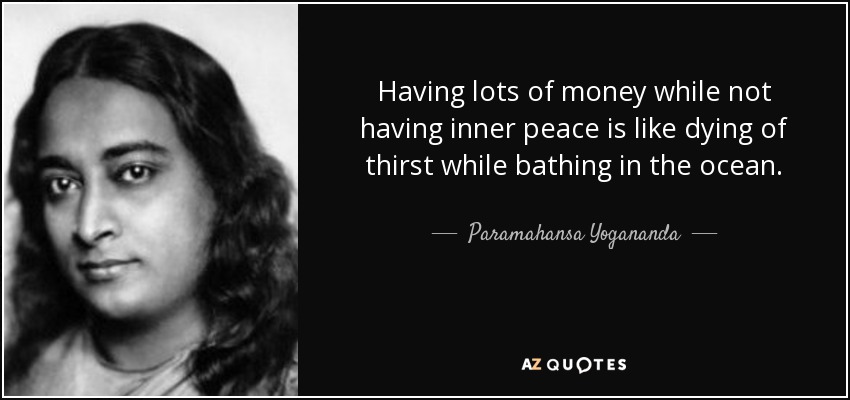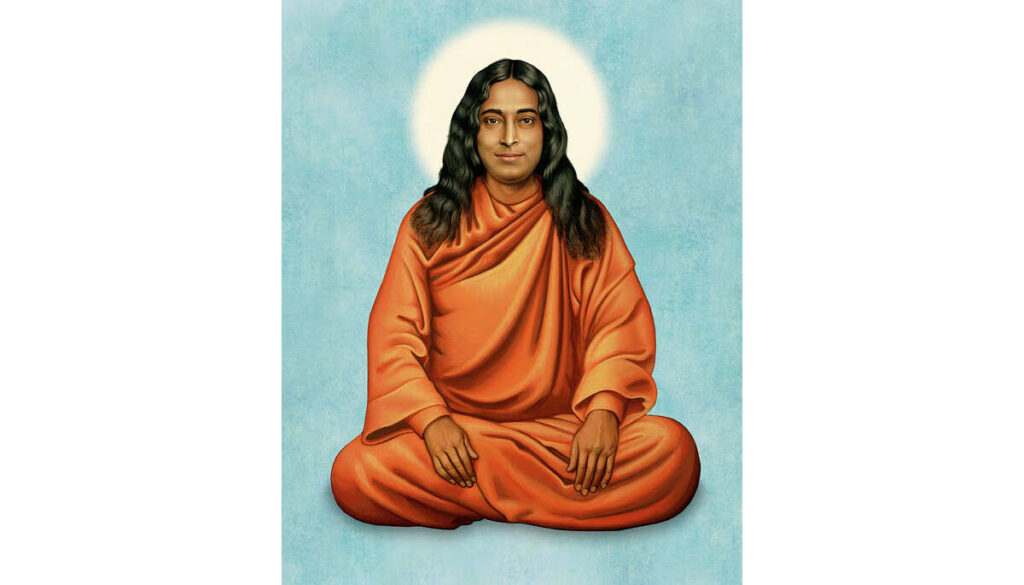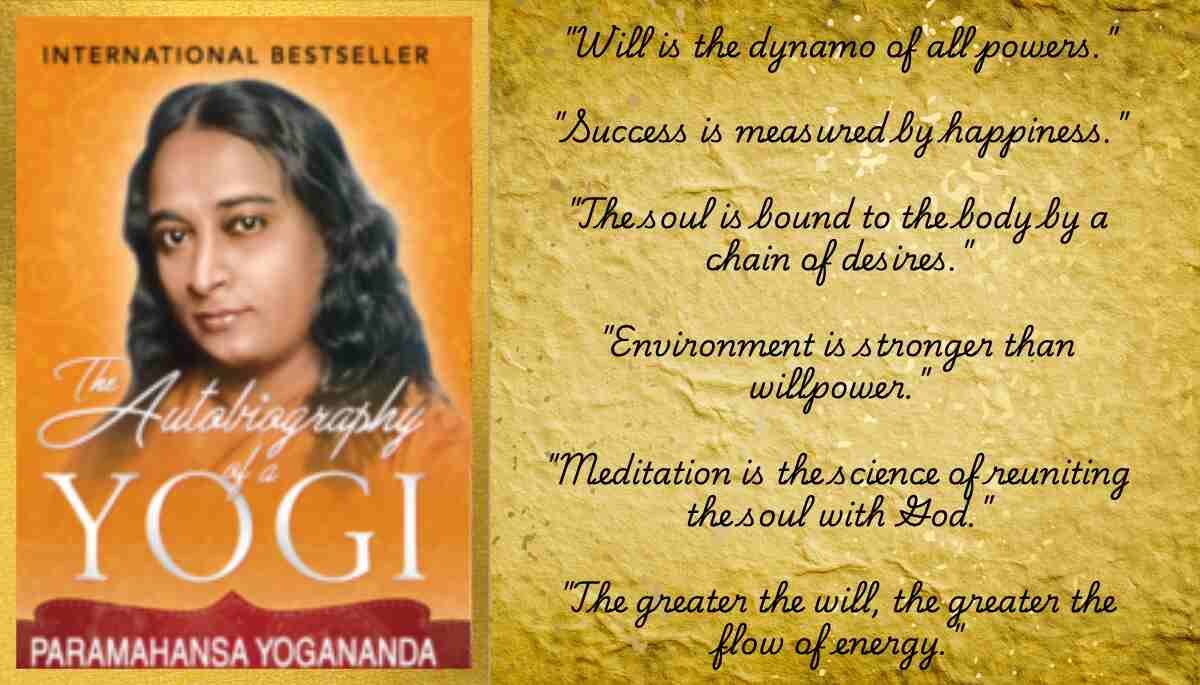Introduction: Autobiography of a Yogi summary with spiritual lessons and self-realization insights
Why Autobiography of a Yogi Still Resonates in the Modern World
In a world dominated by material pursuits and digital distractions, Autobiography of a Yogi by Paramhansa Yogananda offers a soul-stirring journey into the mystical depths of the human spirit. First published in 1946, this timeless classic isn’t just a memoir of a spiritual master—it is a spiritual roadmap. With powerful teachings, miraculous encounters, and transformative wisdom, the book continues to inspire millions globally, including tech visionaries like Steve Jobs, who reportedly read the book every year.
But what makes this autobiography so enduring? It bridges the spiritual philosophies of the East with the scientific rigor and rationalism of the West. It tells us that enlightenment is not an abstract idea, but a realizable state of being.
Part 1: The Formative Years of Paramhansa Yogananda

Birth and Early Mystical Inclinations
Paramhansa Yogananda was born in 1893 as Mukunda Lal Ghosh in Gorakhpur, India. Even as a child, he displayed profound spiritual tendencies. He claimed to recall past lives, often speaking of meditating in the Himalayas or seeing divine visions. These were not merely child’s play but signs of a soul far advanced in its spiritual evolution.
His father, a high-ranking official in the Bengal-Nagpur Railway, and his devout mother, instilled in him a deep respect for the guru-disciple tradition, particularly through their reverence for Lahiri Mahasaya.
The Search for a Guru
From an early age, Mukunda sought spiritual mentors. He was deeply moved by saints and sages he met, all while yearning to discover his destined guru. This longing culminated in a divine encounter with Swami Sri Yukteswar Giri in Varanasi—a meeting that shaped the course of his life.
Part 2: The Transformative Bond with Sri Yukteswar
The Guru-Disciple Relationship
Sri Yukteswar, a strict yet deeply compassionate master, introduced Yogananda to the teachings of Kriya Yoga. Unlike theoretical spirituality, Sri Yukteswar’s methods were practical and demanding, focusing on self-discipline, scientific meditation, and internal purification.
Yogananda endured many trials under his guru but emerged spiritually transformed. He learned that spiritual progress requires surrender, inner strength, and divine trust.
Academic and Monastic Life
Despite his spiritual inclinations, Yogananda excelled in academics. He completed his formal education at Serampore College, a British-affiliated institution, as guided by his guru. In 1915, he took monastic vows and became Swami Yogananda Giri.
Part 3: East Meets West – The Spiritual Voyage to America

The Call to Spread Eastern Spirituality in the West
In 1920, Yogananda traveled to America to speak at the International Congress of Religious Liberals in Boston. His lecture, “The Science of Religion,” was met with acclaim and marked the beginning of his mission to bring Eastern spiritual science to the West.
Establishing the Self-Realization Fellowship (SRF)
In Los Angeles, he founded SRF to teach Kriya Yoga and promote spiritual understanding. His teachings resonated widely. Americans, disillusioned by dogma, found in Yogananda’s teachings a universal, experiential spirituality that emphasized inner transformation.
He also formed relationships with prominent figures such as Luther Burbank, a botanist he referred to as an American saint, and Mahatma Gandhi, whom he initiated into Kriya Yoga.
Part 4: Mystical Encounters and Spiritual Phenomena
Miraculous Saints and Yogic Powers
The autobiography is filled with astonishing accounts of saints possessing extraordinary powers: the Perfume Saint, who could conjure scents at will; the Tiger Swami, who fought tigers barehanded; and Giri Bala, the woman who lived without food.
Yogananda shares these stories not as fantasies but as illustrations of the untapped potential within each human being when one aligns with divine consciousness.
Friendships with Spiritual Luminaries
Yogananda met Rabindranath Tagore, Ramana Maharshi, and Jagadish Chandra Bose. These encounters show how spirituality, science, and art converge when grounded in universal truth.
Part 5: Understanding Reincarnation, Karma, and Soul Evolution
The Cycle of Birth and Death
Yogananda explains reincarnation not as superstition but as a logical continuum of soul evolution. He debunks the idea of humans reincarnating as animals unless spiritually regressive lessons are involved.
The Law of Karma
Karma is presented as an impartial law of cause and effect. Yogananda emphasizes personal responsibility and conscious living. According to him, past actions create present circumstances, and present actions shape future realities.
Spiritual Growth through Adversity
Yogananda endured long fasts, insect bites during meditation, and social ridicule—all to train the mind to focus beyond physical discomfort and become God-centered.
Part 6: Core Spiritual Teachings of Yogananda

1. Self-Realization
Self-realization means recognizing our oneness with God. It’s not just belief but an experiential truth. Meditation, especially Kriya Yoga, is the most direct route to this realization.
2. Divine Love and Service
True love is unconditional, unlike worldly love, which is often transactional. Yogananda taught that living in service and spreading joy is the mark of a spiritually evolved person.
3. Power of Thought and Will
Thoughts shape reality. Yogananda emphasized the magnetic power of the mind, declaring, “You become what you think.” Willpower, rightly used, can manifest health, wealth, and spiritual awakening.
4. Fear and Mental Paralysis
Fear drains vital energy. According to Yogananda, fear is the great enemy of willpower. Courage and faith in divine support are antidotes to fear.
5. Meditation and Inner Stillness
In our chaotic modern life, Yogananda urges us to practice deep meditation. Through concentration, we tap into the infinite reservoir of universal energy and intelligence.
6. Conscious Living
Yogananda warns against mindless living. He encourages introspection, self-analysis, and conscious decision-making as tools for both spiritual and material success.
Part 7: Legacy, Death, and Continuing Relevance
A Peaceful Passing
In 1952, Yogananda passed away during a speech in Los Angeles. Eyewitnesses and mortuary reports noted no signs of decay even weeks after his death—a testament, perhaps, to his high spiritual state.
Lasting Impact
Today, the Self-Realization Fellowship continues his work globally. His teachings are incorporated in yoga studios, meditation centers, and holistic healing programs across continents.
From Silicon Valley entrepreneurs to spiritual seekers, Yogananda’s message of blending spiritual insight with practical living continues to inspire people of all ages.
Teachings from Autobiography of a Yogi – Summary Table

| Topic / Theme | Explanation | Real-Life Application |
|---|---|---|
| Guru-Disciple Relationship | The spiritual bond between a guru and disciple is central to growth. Yogananda’s bond with Sri Yukteswar is deeply transformative. | Seek mentorship or guidance in any journey—spiritual or professional—for accelerated personal growth. |
| Kriya Yoga | A powerful yogic practice focusing on breath control and meditation to awaken spiritual consciousness. | Adopt breath-based meditation or yogic techniques to improve focus, reduce anxiety, and connect inward. |
| Self-Realization | Realization of the soul’s oneness with God. Not just theory but a lived experience of divine presence within oneself. | Daily introspection and mindfulness help reconnect with your purpose and divine potential. |
| Power of Will | Willpower is like a spiritual dynamo. It creates success when directed positively. | Cultivate willpower through small disciplines and goal-oriented action. |
| Fear Management | Fear weakens the nervous system and vitality. Faith in divine power dissolves fear. | Replace fear with faith in self and universe; practice gratitude and positive visualization. |
| Law of Reincarnation and Karma | Life is a continuous journey. Your current circumstances are tied to past actions and lessons needed for the soul’s progress. | Understand setbacks as opportunities for growth; practice good deeds to shape positive future outcomes. |
| Meditation and Concentration | Meditation helps drain mental clutter and build deep spiritual clarity. It is a gateway to inner peace and universal connection. | Practice 10–20 minutes of daily meditation for stress relief, clarity, and better decision-making. |
| Living with Divine Purpose | Life becomes meaningful when we align our actions with divine will rather than ego. | Do work that serves a higher cause or uplifts others, not just personal ambition. |
| Service to Others | True success and happiness come from serving others selflessly. | Volunteer or help someone daily; it fosters empathy and brings deeper fulfillment. |
| Energy and Vibration | Every person emits energy. Spiritual awareness raises this vibration, attracting positive outcomes and people. | Surround yourself with positive influences and maintain inner harmony to elevate your energy field. |
| Material vs. Spiritual Wealth | True wealth lies in peace of mind and spiritual progress, not just material success. | Balance ambition with inner growth; meditate on abundance and purpose, not only profits. |
| Impact of Thought | Thoughts are seeds that become reality. Negative thoughts attract failure, while persistent positive thinking brings success. | Use affirmations, visualization, and mental discipline to reprogram your mindset. |
| Universal Spirituality | Yogananda respected all faiths. His teachings bridge science, spirituality, East and West. | Practice religious tolerance and seek wisdom in all traditions. |
| Scientific Spirituality | Yogananda harmonized science and spirit—energy, vibration, atoms, and consciousness are interconnected. | Embrace both logic and intuition in your personal and professional life. |
| The Power of Initiative | Initiative is a divine creative force. Even a single inspired action can alter destiny. | Don’t wait for ideal conditions—start now with what you have. |
| Detachment and Letting Go | Everything in the material world is temporary. Attachment causes suffering. | Learn to live fully while being non-attached to outcomes or possessions. |
Conclusion: Why You Should Read Autobiography of a Yogi
Reading Autobiography of a Yogi isn’t just an intellectual experience—it’s a spiritual initiation. The book isn’t about creating believers; it’s about awakening seekers. Through stories, parables, scientific references, and universal truths, it offers tools to live a more conscious, joyous, and purposeful life.
Whether you’re curious about yoga, searching for deeper meaning, or simply fascinated by mystical tales of saints and sages, this book is a transformative guide.
As Yogananda said, “This book will change the lives of millions. It will be my messenger when I am gone.”
Frequently Asked Questions about Autobiography of a Yogi
What is Autobiography of a Yogi about?
Answer:
Autobiography of a Yogi is the spiritual memoir of Paramhansa Yogananda, chronicling his life, spiritual experiences, encounters with saints, and the introduction of Kriya Yoga to the West. The book blends philosophy, mysticism, and practical spirituality, offering insights into reincarnation, divine will, and self-realization.
Why did Steve Jobs read Autobiography of a Yogi every year?
Answer:
Steve Jobs considered Autobiography of a Yogi his most influential book. He read it annually for its deep insights on meditation, discipline, and spiritual clarity. It helped him find inner peace and inspired his vision of innovation guided by intuition and spiritual purpose.
What is Kriya Yoga and why is it important in the book?
Answer:
Kriya Yoga is a meditative technique that uses controlled breathing to accelerate spiritual growth and consciousness. Taught by Sri Yukteswar to Yogananda, it is central to the book and seen as a direct path to self-realization, inner calm, and divine connection.
What is the significance of the guru-disciple relationship in the book?
Answer:
The guru-disciple bond, especially between Yogananda and Sri Yukteswar, reflects the sacred Eastern tradition of spiritual mentorship. It is portrayed as essential for inner transformation, disciplined practice, and transmission of divine knowledge through a realized master.
How does the book explain reincarnation and karma?
Answer:
Yogananda presents reincarnation as part of the soul’s evolution, where each life is shaped by karmic law—the principle that actions yield corresponding results. Unlike the Western idea of linear life, he describes a cyclical soul journey aimed at attaining liberation (moksha).
How can Autobiography of a Yogi help modern readers?
Answer:
The book offers timeless lessons on managing stress, fear, ego, and materialism. Readers gain tools like meditation, breath control, and positive thinking to cultivate inner peace, clarity, and purpose—even in today’s fast-paced world.
Is Autobiography of a Yogi religious or spiritual?
Answer:
While rooted in Hindu philosophy, the book is universal in its spiritual message. Yogananda respects all religions and emphasizes unity with God through self-realization, making it suitable for people of all faiths or even those exploring spirituality without dogma.
What miracles are described in Autobiography of a Yogi?
Answer:
The book describes many miraculous experiences, such as saints who levitate, control bodily functions, manifest scents, live without food, or teleport. These are not presented as fantasy but as natural outcomes of deep spiritual mastery and yogic science.
What is the message of the book regarding fear and willpower?
Answer:
Yogananda teaches that fear drains life energy and paralyzes potential. He emphasizes that dynamic willpower, rooted in divine trust, can overcome fear, manifest desires, and reshape destiny.
Can reading this book help in achieving success?
Answer:
Yes. Many principles in the book—like focused thought, disciplined routine, meditative clarity, service to others, and trust in divine timing—are directly applicable to achieving both material success and inner fulfillment.
Where can I start with Yogananda’s teachings after reading this book?
Answer:
You can explore further through the Self-Realization Fellowship (SRF) founded by Yogananda, which offers structured lessons in Kriya Yoga, meditation techniques, and spiritual living. Books like The Second Coming of Christ and The Yoga of Jesus also expand on his philosophy.

